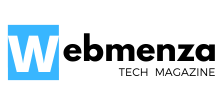Nowadays, it seems as though if you can think up something you need, there’s probably an app for that. Today’s options for apps — for just about anything — are seemingly endless. If you’re looking to switch up your home screen and be more productive, where do you start?
Your personal productivity goals will be entirely unique based on your life, work, and priorities. Listed below are nine categories of apps that can help you amp up your productivity.
1. Task Management Tools
There are always things to do and it can be hard to keep track of all of them. This is especially true when responsibilities in work and life continue to increase. Consider using an app such as Todoist to manage life’s endless lists.
You can categorize tasks and share them with team or family members to lighten your load. Since your list is app-based, you can access it on the go. And you’ll never lose a to-do list again.
2. Financial Management
Managing your checking, savings, investments, and credit cards can be a challenge, especially when they’re spread across different financial institutions. Consider using a financial aggregator such as Mint to collate all of your account balances and bill due dates. Securely connect your accounts and maintain an at-a-glance picture of where your finances stand.
If you’re trying to work on building up your credit score, you can monitor your credit utilization using Mint. You can also use a credit builder card app to track how your score is improving as you cultivate good money habits.
3. Health and Wellness
Health and wellness is increasingly becoming a priority for many people. Keep your medical benefit information close at hand by downloading your health insurance provider’s app. You can review your coverage, deductible, and maximum out-of-pocket expenses. Many allow you to project potential costs of new procedures or medications.
You can reference this app during an appointment with your healthcare provider. That way, you can make well-informed decisions about your care. Many apps allow you to research specialists and identify cost-saving opportunities for procedures and tiered services.
4. Fitness and Training
The pandemic convinced many people to cancel traditional gym memberships and migrate to a digital app platform. Fitness and training apps are available for any fitness experience. They offer a dynamic way for users of all ages and abilities to get moving. Many apps allow you to track your consistency and fitness improvements.
If you’ve been trying to increase how many push-ups, squats, or deadlifts you can do in a session, a fitness app could help. Select one focused on strength training and track your improvement through dynamic charts and tables. Often, these apps are developed by professional trainers and can provide cost-effective workouts supported by sports science.
5. Mental Health Training and Consultation
Mental health care is for everyone. Thankfully, getting the care that’s needed is being destigmatized thanks to more people speaking openly about the challenges of daily living. Support your mental well-being by downloading mindfulness apps such as Calm that can help you relax and manage moments of anxiety.
You might also consider an app such as Talkspace that offers consultations with mental health professionals. This discreet method for accessing behavioral health support can help you get the care you need, wherever you need it.
6. Travel and Dining
Even if you’re not boarding a plane today, keeping track of your travel itinerary on your phone can be a game-changer. Download your favorite airline’s mobile app and access boarding information and flight updates. You can even download your boarding pass so everything is at your fingertips. Make sure your app-based travel is successful. Just make sure your phone is fully charged before you hit the road.
Download dining apps such as Yelp to review the hotspots you’re thinking of visiting. Create a list for your next trip within the app and save the spots you want to check out. While you’re on your trip, reference your list and work through it as you see fit. Be sure to leave reviews to provide helpful tips for other travelers!
7. Photo Sharing and Storage Apps
Today’s smartphones have made traditional photography nearly obsolete for the common person. Organize and store your digital treasures by downloading a photo sharing and storage app such as Google photos. You can store a limited amount of data for free in the cloud. This can help you free up storage space on your phone.
Share albums with friends and family easily. When you’re at your next event, designate a photo taker to document the day and share within the app later. You’ll be able to enjoy your day more freely while confident that memories are being captured.
8. Grocery and Shopping
Life can get busy. A fleeting thought about your grocery list could easily escape you by the time you make it to the store. Document household needs in real-time by downloading your preferred grocery app on your phone. You can create a digital shopping list to use in-store or create a cart for delivery or pick-up orders. This way, you can document the items you need as you would add them to your shopping list.
Getir, a grocery delivery service, takes care of your grocery needs. Getir discount codes are available in the app for new and loyal users which is a big plus on top of getting a fast delivery service which will save so much time and money. Many grocery stores will also suggest coupons that pair well with your selections. Others may also suggest previously purchased items to help you round out your list. Apps such as Amazon can help you quickly add necessities to your cart. If you’re an avid user of the “subscribe and save” feature, you can review your monthly shipment before the deadline. You’ll be able to take advantage of member pricing while avoiding overstocking.
9. Document Editing and Storage
Keep important documents and data at your fingertips by downloading apps such as Google Docs and Google Sheets. You can even keep certain emergency contact information in a Google Doc. Share this information with your partner or parent in the event of an emergency.
If you use Excel to manage your budget, you can quickly update it using your Google Sheets app. Similarly, if you consult with another individual or financial advisor this can be an easy, secure way to share data. If you have children, it’s common for their school to request a record of their vaccination schedule. Scan and store this information in your app so that you can easily send it to school, summer camps, and daycare providers.
Getting Productive Without Distraction
Apps can be a blessing. However, the tough reality is that they come to us on one of the most distracting, productivity-killing inventions ever — smartphones.
Stay one step ahead of your time-sucking phone and use behavioral science to your advantage. Create a primary home screen that features only those apps that support your goals. Arrange your home screen how you like, using folders for the categories that make the most sense. Next, create a secondary screen with folders to bucket the remaining apps across social media, messaging, and video platforms. That way, you’ll see the core apps that’ll help you stay on task and stay productive.

